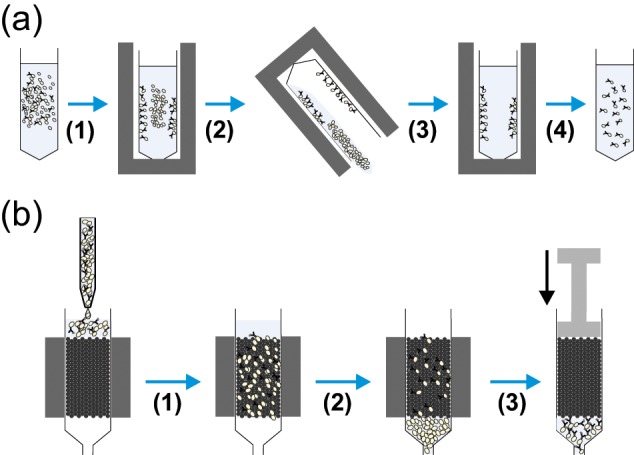Techniques for Cell Separation
Cell separation is a powerful tool, which is widely used in many strands of biological and biomedical research and clinical therapy. For research, the ability to sort cells into distinct populations enables the study of individual cell types isolated from a heterogeneous starting population without (or with greatly reduced) contamination from other cell types.
Centrifugation
Centrifugation is one of the oldest and most commonly used techniques for cell separation. It relies on the principle of differential sedimentation, whereby cells of different densities can be separated based on their sedimentation rates under centrifugal force. By carefully optimizing the centrifugation parameters such as speed, time, and rotor type, specific cell populations can be isolated from heterogeneous mixtures.
Buoyancy-Activated Cell Sorting (BACS)
- BACS is a novel cell separation technique that utilizes the different buoyancy properties of cells. This technique involves the use of calibrated density microspheres, which interact with cells based on their surface properties. By adjusting the density of the microspheres, specific cells can be selectively captured and separated from a mixture.
- BACS is fast, easy, and inexpensive in comparison to the other methods, and preserves cell health and physiology for downstream applications. It can be used in conjunction with other techniques to further purify a sample or by itself as a standalone isolation method.
Magnetic-Based Cell Sorting
 Fig. 1 Diagrams showing the common methods used for magnetic cell separation. (Tomlinson MJ, et al., 2013)
Fig. 1 Diagrams showing the common methods used for magnetic cell separation. (Tomlinson MJ, et al., 2013)
Magnetic-based cell sorting is a widely used technique that harnesses the power of magnetic fields to separate cells. This method involves labeling target cells with magnetic beads, which can then be manipulated and separated using magnetic force. By applying a magnetic field, the labeled cells can be selectively retained while untagged cells are washed away.
Fluorescence-Activated Cell Sorting (FACS)
FACS analysis is a specialized type of flow cytometry that involves labeling targeted cells with fluorescent markers and running the sample through a flow cytometer device. Then, cells are identified and sorted one by one based on the color of their markers into isolated cell populations.
Additional Cell Separation Methods
- Different cell types have different adhesion properties, which determine the cells they attach to. Depending on the environment used for cell culture, it is possible to control whether or not cells will adherently separate from other suspended cells.
- Sedimentation relies on the same properties as filtration and centrifugation on the basis that gravity will help denser components sediment faster than less dense components.
Creative Bioarray Relevant Recommendations
Creative Bioarray is dedicated to delivering thoroughly tested and high-quality products that do not adversely affect cells during isolation. We offer a ready-to-use density gradient medium and PBMC Isolation Kit for purifying lymphocytes in high yield and purity from small or large volumes of peripheral blood from different species. We are dedicated to delivering thoroughly tested and high-quality products that do not adversely affect cells during isolation.
| Product Types | Details |
| Human cell isolation | B cells, T cells, dendritic cells, granulocyte cells, leukocyte cells, monocyte cells, NK cells, tumor cells, stem cells |
| Mouse cell isolation | B cells, T cells, dendritic cells |
| Non-human primate cell isolation | B cells, T cells |
Reference
- Tomlinson MJ, et al. (2013). "Cell separation: Terminology and practical considerations." J Tissue Eng. 4, 2041731412472690.